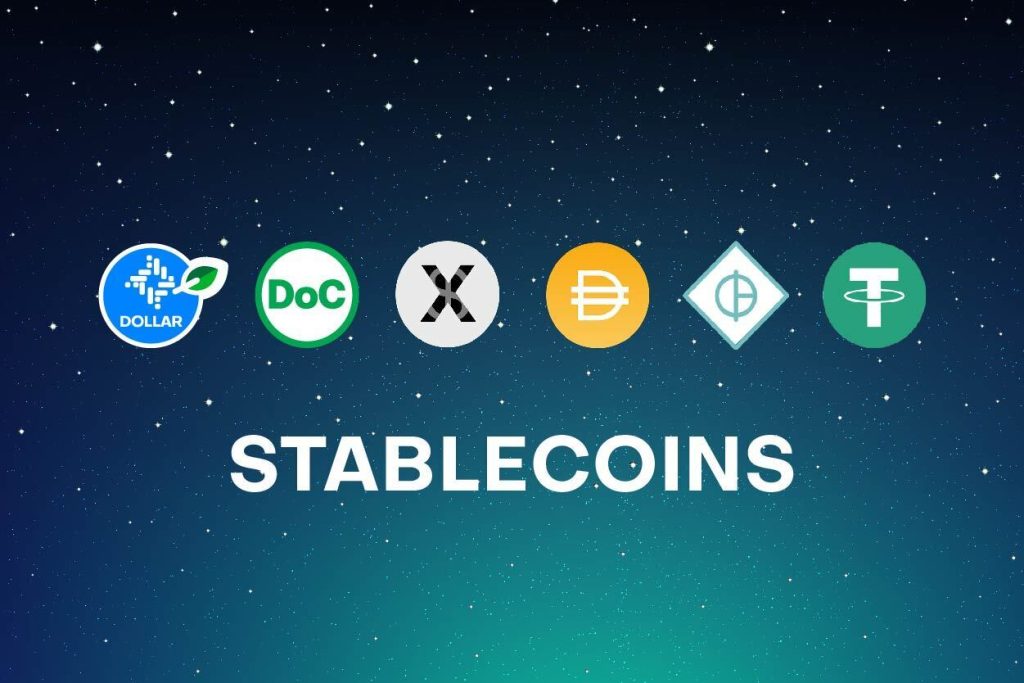In recent years, the role of stablecoins has become increasingly significant in the evolution of financial services. Stablecoins, which are digital assets pegged to stable assets like fiat currencies, offer a unique blend of cryptocurrency innovation and traditional financial stability. Their potential to democratize access to financial services in the United States is a topic worth exploring.
The impact of stablecoins on financial inclusion

Stablecoins have emerged as powerful tools for financial inclusion, granting more individuals access to basic financial services. In the United States, millions remain underserved by traditional banks, facing barriers such as stringent criteria for account openings and high fees. Stablecoins offer a way around these obstacles, allowing individuals to trade, save, and transact without needing a conventional bank account.
This unprecedented access is facilitated through smartphone technology, as stablecoin wallets can be easily downloaded and used on mobile devices. Essentially, stablecoins provide a bridge for the unbanked and underbanked to participate in digital financial ecosystems, promoting greater economic equality. By leveraging blockchain technology, these digital currencies reduce the dependency on centralized financial institutions and enable peer-to-peer transactions that are often faster and cheaper.
Expanding opportunities for small businesses
For small businesses, stablecoins provide a means to transcend traditional financial barriers and engage in a broader market. Often, SMEs face challenges with cross-border transactions, high transaction fees, and delays associated with conventional banking systems. By using stablecoins, these enterprises can settle payments with suppliers and customers around the globe almost instantaneously and at lower costs, enhancing their competitiveness.
Furthermore, stablecoins offer small businesses a more robust mechanism for managing cash flow and finances. They can make swift and secure payments and better adapt to sudden market changes. This agility supports business resilience, especially in a fast-paced digital market environment, allowing for growth and innovation.
Breaking down barriers in traditional finance
One of the critical innovations of stablecoins is their potential to disrupt and improve upon outdated systems within traditional finance. Challenges such as slow transaction speeds and high fees often place undue burdens on consumers and businesses alike. Stablecoins, utilizing decentralized blockchain technology, facilitate near-instantaneous transactions at significantly reduced prices.
The transparency offered by stablecoins is another advantage, as users can view transactions on a public ledger. This visibility can deter fraud and allow for more straightforward auditing processes. Ultimately, lower transaction costs and increased transaction speeds streamline operations and enhance customer satisfaction.
The regulatory landscape of stablecoins in the US
As stablecoins continue to rise in prominence, they have attracted increased attention from regulatory bodies in the United States. Regulators are keen on understanding and managing the risks associated with digital currencies, such as fraud and financial instability. Balancing innovation with protection is a nuanced challenge facing policymakers.
Current US regulations on stablecoins largely focus on preventing illicit activity and ensuring the stable backing of these digital assets. However, the rapidly evolving nature of the cryptocurrency market means regulations are constantly adapting. The extent to which regulatory oversight can coexist with innovation will shape the stablecoin ecosystem in the years to come.
Clear and comprehensive regulations could provide stablecoin users with greater confidence, driving broader adoption and integration into the financial mainstream. Ultimately, an environment that fosters innovation while maintaining safety and stability is critical to harnessing the full potential of stablecoins in modern finance.
Potential concerns and criticisms
While stablecoins hold immense promise, they are not without their criticisms and potential challenges. One of the primary concerns is the risk of centralization. If too much power is concentrated in the hands of a few stablecoin issuers, this could replicate the same issues present in traditional finance.
Another issue is the technical complexity and security risks associated with digital currencies. While blockchain technology offers enhanced security features, it is not immune to hacking and other cyber threats. Moreover, the relative novelty of stablecoins means that users and institutions may lack a deep understanding of their operational dynamics.
Addressing these concerns will be vital for ensuring that stablecoins continue to play a democratically empowering role in financial services, with robust education and security measures as keys to sustainable adoption.
Looking ahead: the future of stablecoins in democratizing finance
As stablecoins evolve, their role in democratizing finance is set to grow. They stand to play a significant part in fostering financial inclusion, economic equality, and the dismantling of traditional financial barriers. Collaboration among governments, innovators, and regulators will be crucial in creating an environment that supports stablecoins’ unique advantages.
The continued development and acceptance of stablecoins could lead to the creation of more inclusive global financial systems, where everyone has the opportunity to participate fully, without economic background being a barrier. As technology advances, stablecoins may even evolve into new forms offering additional utilities.
In conclusion, stablecoins represent a powerful tool for fostering financial democracy. With responsible management and continuous innovation, they can transform how financial services operate in the US and globally, driving a more inclusive economy.



